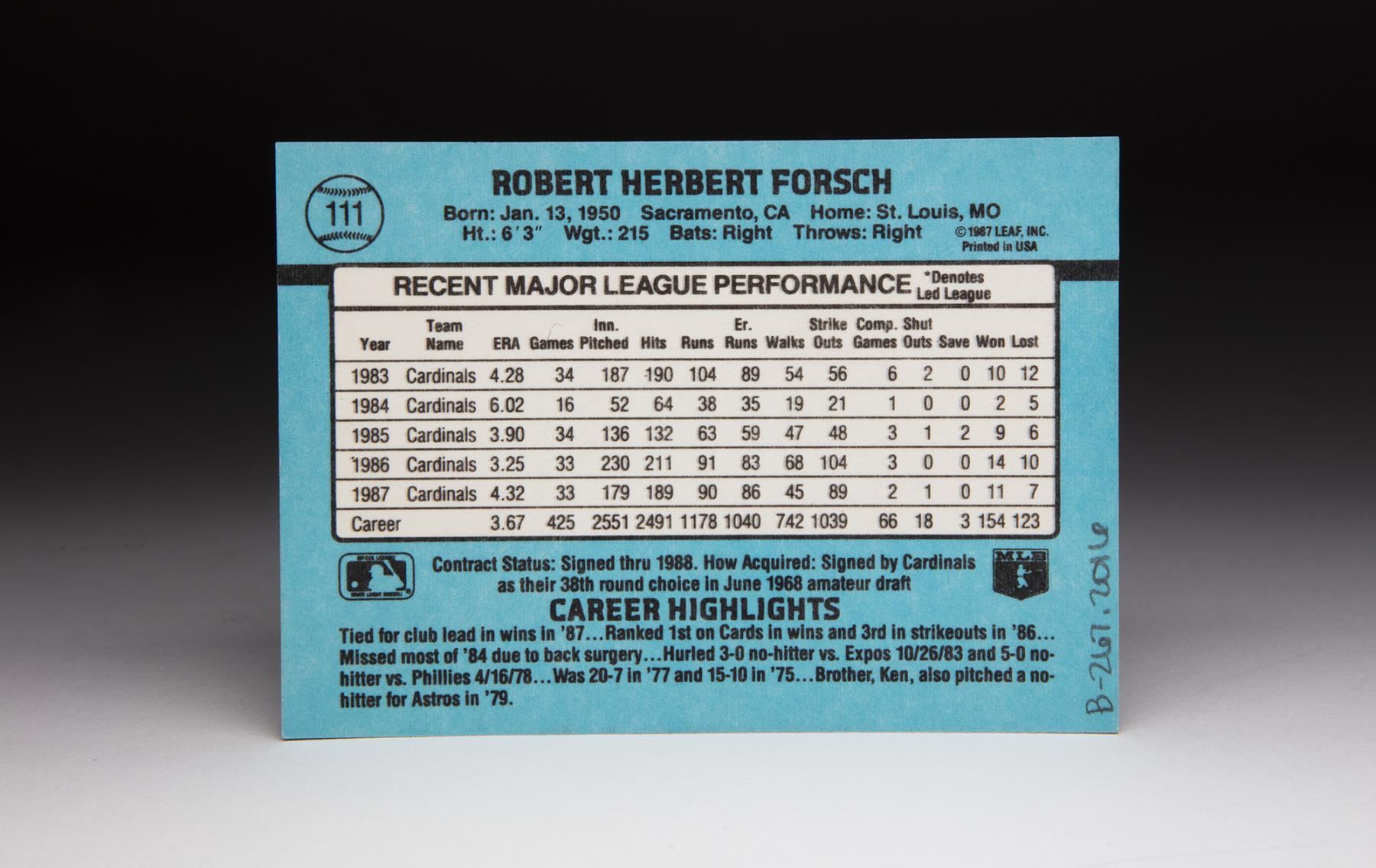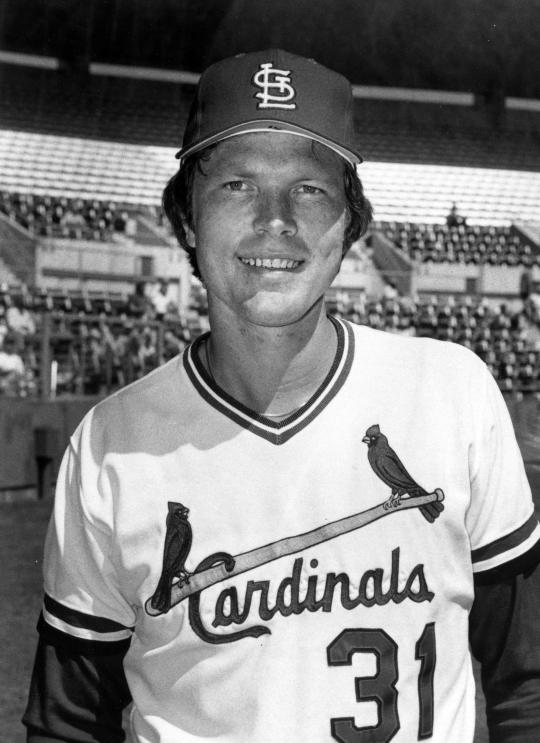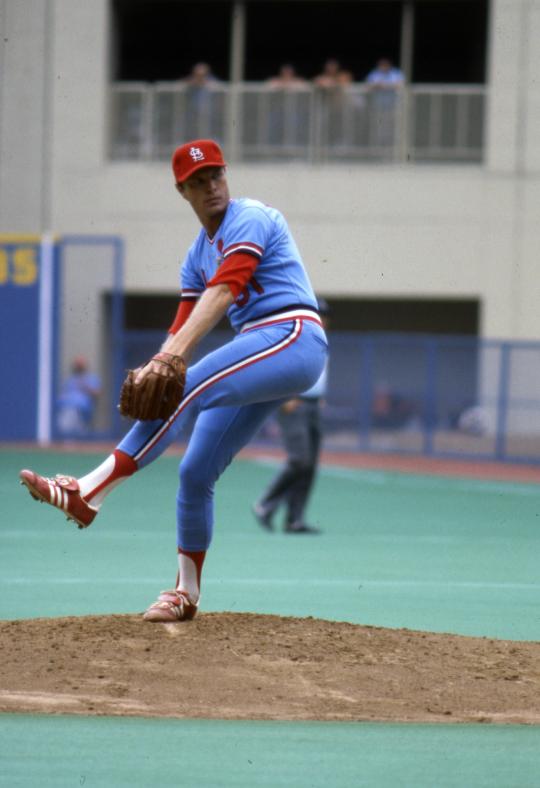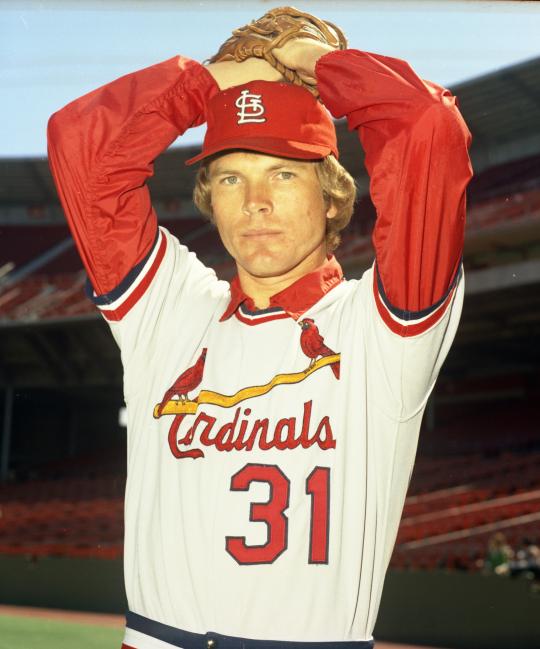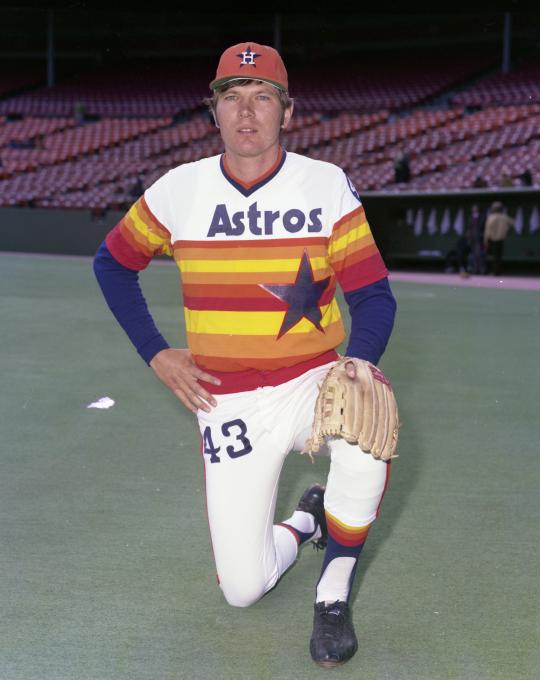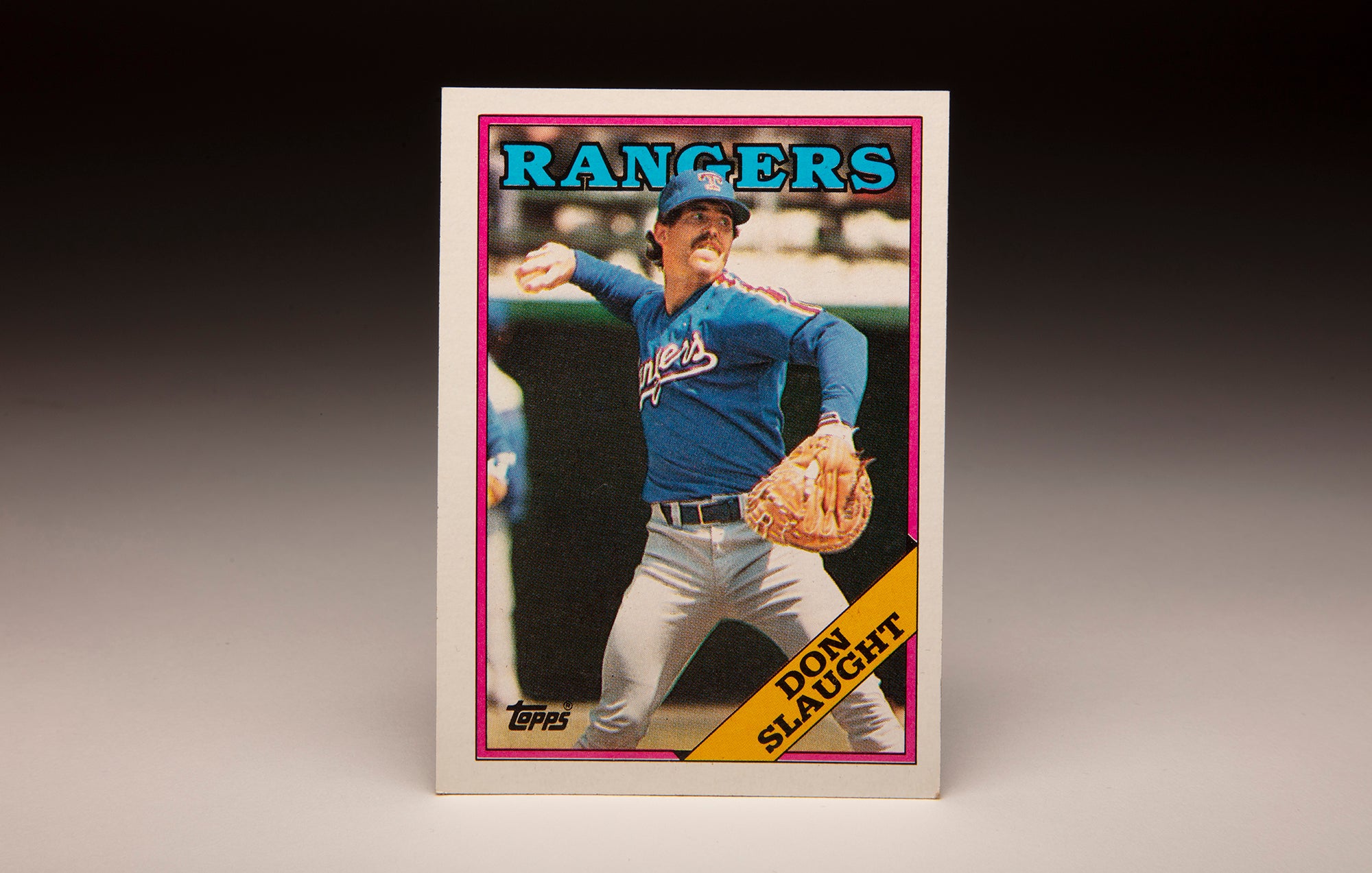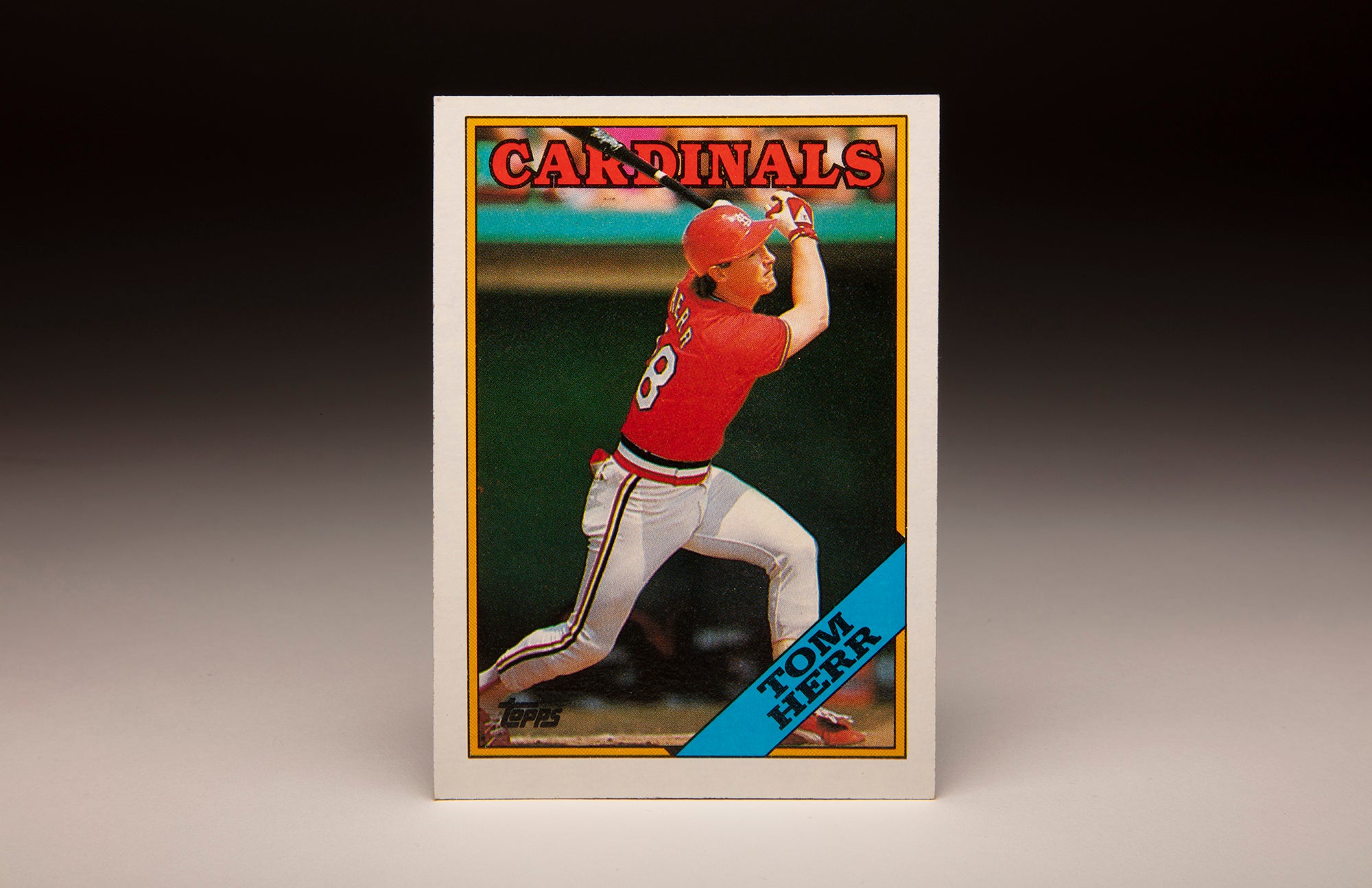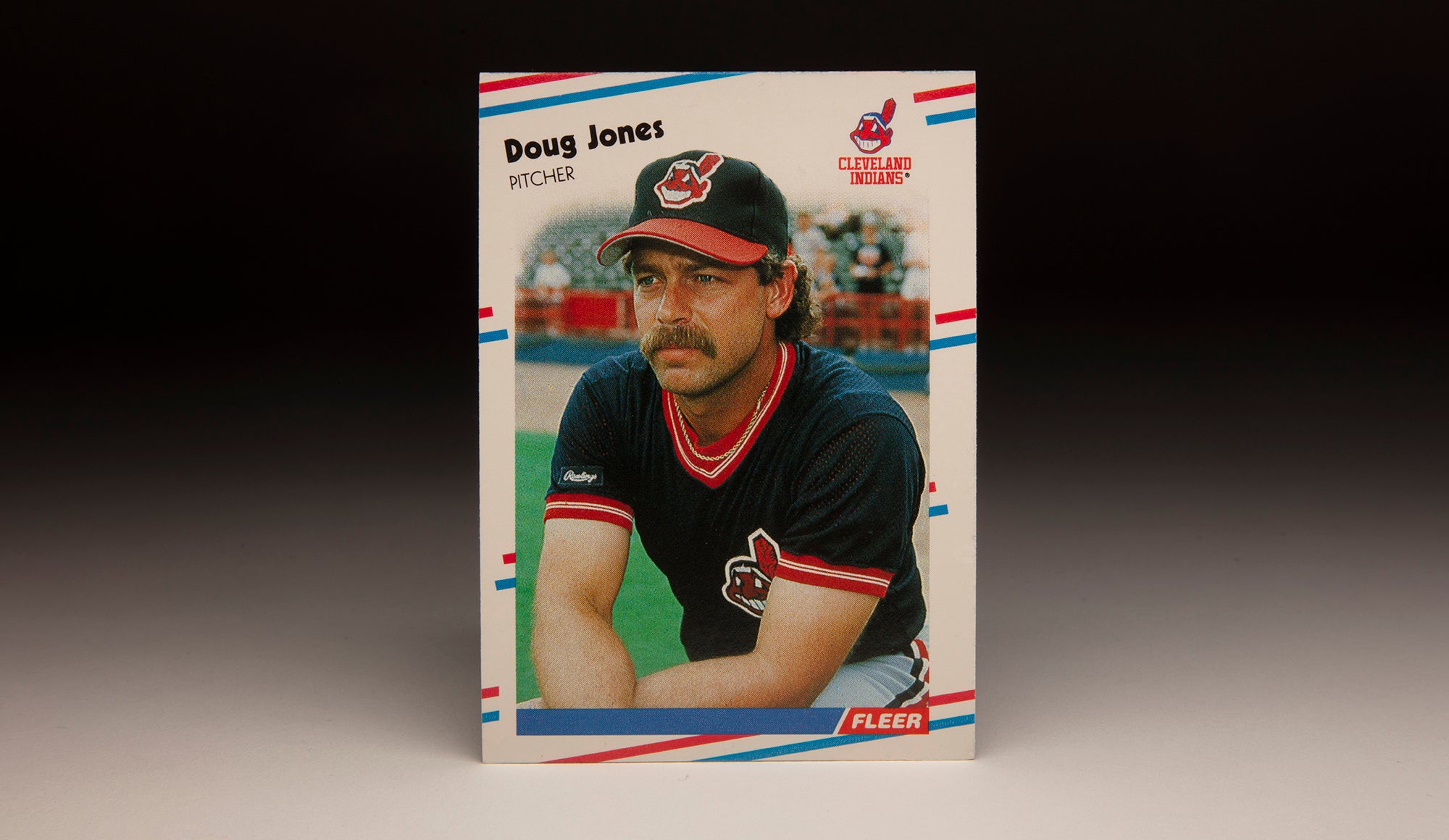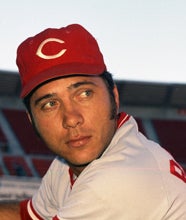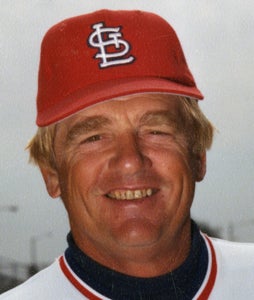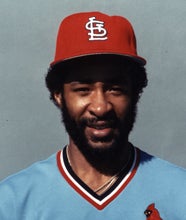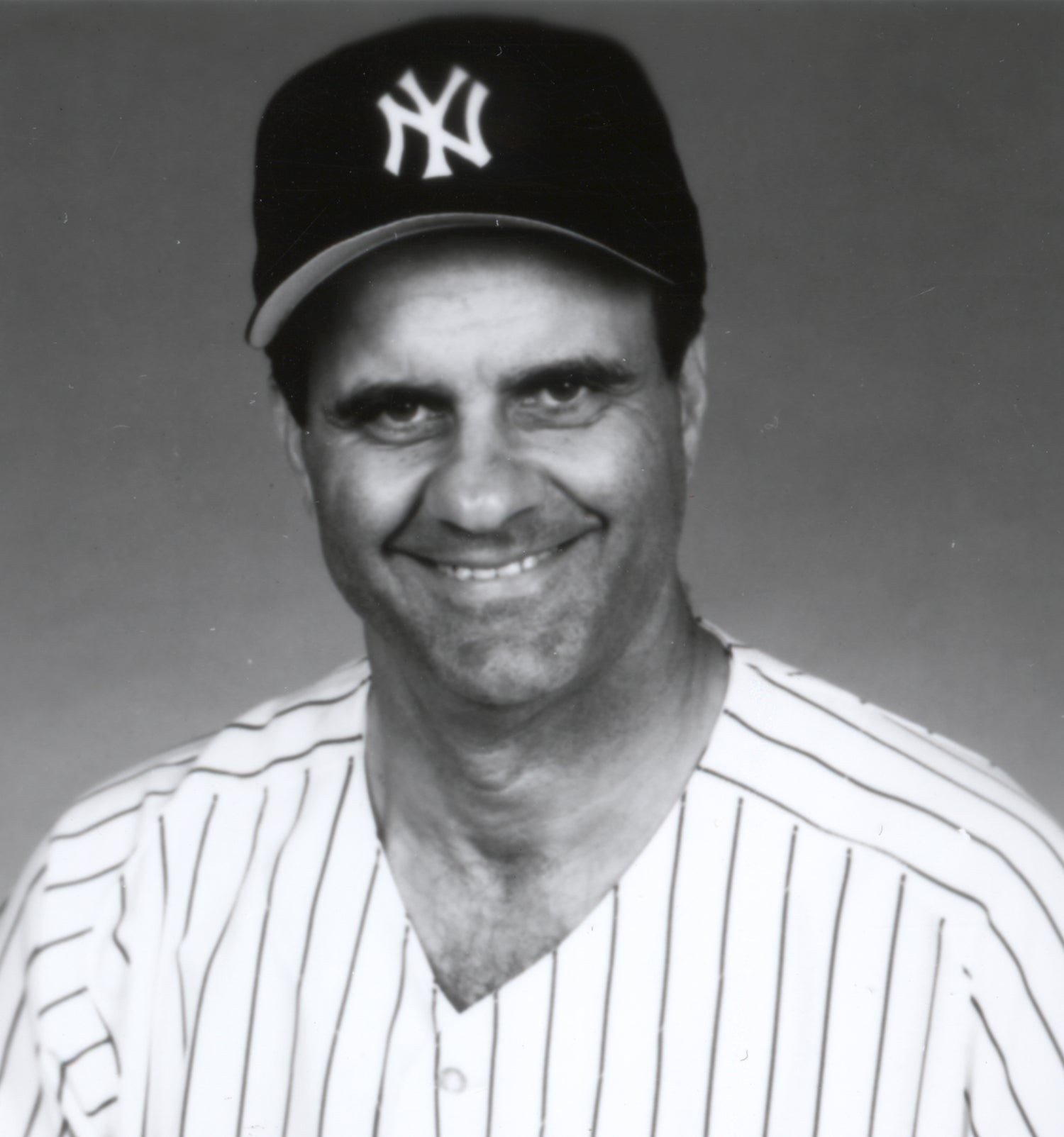- Home
- Our Stories
- #CardCorner: 1988 Donruss Bob Forsch
#CardCorner: 1988 Donruss Bob Forsch
There were 12,457 fans in attendance at St. Louis’ Busch Stadium on Sept. 26, 1983, for a late-season game between the Cardinals and the Expos.
On the mound for St. Louis was veteran Bob Forsch, who was 8-12 with a 4.61 ERA and appeared to be at a career crossroads. The day before, Cardinals manager Whitey Herzog suggested to Forsch that he experiment with a knuckleball during the coming winter in the Florida Instructional League.
“I don’t think I’m ready for that right now,” Forsch told the St. Louis Post-Dispatch.
What Forsch needed was a little magic. And in the stands that night happened to be author W.P. Kinsella, who the year before had published the novel “Shoeless Joe” that would one day be adapted into the movie Field of Dreams.
Perhaps guided by the supernatural, Forsch pitched a no-hitter – becoming just the 25th pitcher to record two no-hit games.
“I’m more interested in fantasy than baseball,” Kinsella told Post-Dispatch columnist Kevin Horrigan during the no-hitter. “It’ just that baseball lends itself to fantasy so well.”
Cardinals Gear
Represent the all-time greats and know your purchase plays a part in preserving baseball history.
Hall of Fame Membership
There is no simpler, and more essential, way to demonstrate your support than to sign on as a Museum Member.
Forsch would likely have agreed as he became just the ninth pitcher of the 20th century to have a 20-win season, play for a World Series winner and pitch two no-hitters.
For a player who was once a failed minor league third baseman, it was a resume worthy of Hollywood storytelling.
Born Jan. 13, 1950, in Sacramento, Calif., Forsch and his older brother Ken learned baseball from their father, a semipro ballplayer from South Dakota who moved to California and became an electrician. Ken, three-and-a-half years older, had success at Oregon State University as a pitcher – and Bob signed a letter of intent with OSU after graduating from Hiram Johnson High School in 1968.
As a senior at Hiram Johnson, Bob Forsch starred at the plate and on the mound, going 5-1 with a 0.21 ERA in 40 innings while also batting .375. Growing into his 6-foot-4 frame, Forsch appeared to need a little time to find his ideal position.
But when the Cardinals took Bob in the 26th round of the 1968 MLB Draft – eight rounds after the Astros selected Ken – Bob decided his baseball future was in St. Louis, especially after the Cardinals gave him an $8,000 bonus to walk away from his college commitment.
The Cardinals, meanwhile, decided Forsch’s future was as a third baseman and sent him to their Gulf Coast League team, where he hit .224 with only five extra base hits in 44 games. He fared no better in 1969, hitting .223 over 55 games in Class A stops in Lewiston, Idaho, and Modesto, Calif.
Then in 1970, Cardinals executive Bob Kennedy suggested Forsch try pitching.
“The first pitch I threw sailed back to the screen,” said Forsch of his mound debut with the Class A Cedar Rapids Cardinals in 1970. “The second one was hit for a home run.”
But Forsch continued to work at it while hitting .126 over 57 games at three stops in 1970. Then in 1971, Forsch returned to Cedar Rapids and concentrated on pitching, going 11-7 with a 3.13 ERA. Seasons with Double-A Arkansas and Triple-A Tulsa followed, and on July 7, 1974, Forsch debuted with the Cardinals—allowing four hits and two runs over 6.2 innings against the Reds. He was tagged with the loss in a 2-1 defeat as César Gerónimo homered in the seventh inning to give Cincinnati the lead.
An inning later, Johnny Bench – who had hit a blast off Forsch in the first inning that just hooked foul – recorded his 1,000th career hit on a bunt single off Cardinals reliever Rich Folkers.
“I must have scared that kid (Forsch),” Bench told the Journal Herald of Dayton, Ohio, “because he never gave me another good pitch the rest of the game.”
Forsch, however, didn’t pitch like a scared kid. In his next start, he threw a four-hitter against the Braves, striking out five and allowing no walks in a 10-0 victory.
A rough start where he allowed seven runs in less than an inning against the Reds followed, but Forsch rebounded with two straight complete games, including a July 21 start against Houston where his brother Ken pitched two innings of relief in a 9-1 St. Louis win.
In the eighth inning, Bob came to bat against Ken and grounded to shortstop, where Houston’s Roger Metzger threw out Mike Tyson – who had tripled just prior to Forsch coming to bat – at the plate on a fielder’s choice.
One batter later, Forsch scored on an inside-the-park home run by José Cruz.
“It’s hard,” Forsch told the St. Louis Post-Dispatch on hitting against his brother. “You want your team to win but you don’t want your brother to get in trouble, either. Well, you’ve got to go for your team, that’s for sure.”
After a stint in the bullpen, Forsch returned to the rotation in September and tossed another four-hit shutout against the Mets, finishing the year with a 7-4 record and 2.97 ERA in 100 innings.
Forsch went 15-10 with a 2.86 ERA in 230 innings in 1975, recording four shutouts. He battled a sore arm in 1976 and went 8-10 with a 3.94 ERA, going seven weeks without a victory and failing to record a complete game until September.
But in 1977, Forsch stayed healthy all season and became the first Cardinals pitcher to record 20 wins since Steve Carlton in 1971, going 20-7 with a 3.48 ERA, eight complete games and two shutouts.
“I suddenly realized that I wasn’t overpowering, that I had to make them hit the ball to be a winner,” Forsch told the Associated Press after starting and winning the Cardinals season opener in 1978. “I learned the easiest way to accomplish that was to change speeds.”
Then, in his third start of 1978, Forsch made history when he threw a no-hitter against the Phillies on April 16. The game made news all over the country due to a controversial call in the eighth inning after a ground ball by Philadelphia’s Garry Maddox went under the glove of Cardinals third baseman Ken Reitz.
“He called it an error, and it’s an error,” Forsch told the Associated Press of the call by official scorer Neal Russo, a longtime Cardinals beat writer with the Post-Dispatch.
The Phillies, however, disagreed.
“When I saw they didn’t put it (on the scoreboard) right away, I knew they were trying to figure out how to make it an error,” Maddox said. “I thought it was a hit all the way.”
Reitz, who set a National League record by committing just nine errors in 1977, gladly accepted the blame.
“I went down for the ball and kind of double pumped, trying to pick up the bounce,” Reitz told the AP. “I should have had it. It should have been an easy play.”
It was the highlight of the season for Forsch, who finished 11-17 with a 3.70 ERA despite the fact that his peripheral numbers were similar to those he posted during his 20-win season.
In 1979, Forsch was 11-11 with a 3.83 ERA. But he made national headlines on April 7 when his brother Ken no-hit the Braves in his first start of the season, making the Forsches the first brothers with no-hitters in MLB history.
“I’m so happy that he pitched one – I know exactly how he feels,” Bob told United Press International after Ken’s no-hitter. “You don’t realize exactly what you’ve done until you get home.”
Forsch was 11-10 with a 3.77 ERA in 1980 as Whitey Herzog took over as the Cardinals manager and began to reshape the franchise. Forsch won the first of two Silver Slugger Awards that year, hitting .295 with three homers, 11 runs scored and 10 RBI while earning a reputation as one of the top hitting pitchers in the game.
In September, Forsch signed a six-year contract reported to be worth $3.6 million, making him the highest paid pitcher in Cardinals history.
The next year, Forsch was 10-5 with a 3.18 ERA as the Cardinals went 59-43 for a .578 winning percentage that led all NL East teams. But St. Louis finished a game-and-a-half behind the Phillies in the first half of that strike-interrupted season and a half game behind the Expos in the second half, denying Forsch a chance to pitch in the postseason.
But in 1982, the Cardinals won the NL East for the first time – and Forsch tied for the team lead in wins with Joaquín Andújar with 15. Herzog named Andújar to start Game 1 of the NLCS vs. the Braves, but with Atlanta leading 1-0 in the fifth inning the skies opened in St. Louis, leaving the game to be replayed the next night.
Forsch started the newly scheduled Game 1 on Oct. 7, tossing a three-hit shutout on 104 pitches.
“He’s a gutty pitcher,” Braves manager Joe Torre said following Forsch’s NLCS victory. “He doesn’t have the fastball he once had. But he moved the ball around well.”
The Cardinals swept the Braves in three games, and Forsch started Game 1 of the World Series on Oct. 12, giving up 10 hits and four earned runs against a stacked Brewers’ lineup in a 10-0 Milwaukee win. Forsch returned to start Game 5, allowing three earned runs over seven innings in a 6-4 Brewers victory. But St. Louis won the final two games of the Fall Classic, giving Forsch a World Series ring.
Forsch and the Cardinals struggled in 1983 as St. Louis won just 79 games while Forsch went 10-12 with a 4.28 ERA, the first time his ERA topped the 4.00 mark for a season. But he followed up his Sept. 26 no-hitter with another victory on Oct. 1, giving everyone a positive push into the offseason.
“On the other no-hitter, I didn’t get nervous until the seventh inning,” Forsch told the Post-Dispatch following his Sept. 26 gem. “This one I started getting nervous in the fifth. The worst thing was the ninth inning. My knees were shaking and I had to stand up to see.
“A lot of people said that (the first no-hitter) was tainted (because of the eighth-inning scoring decision). This one, I don’t think there was any question about.”
The Cardinals improved to 84 wins in 1984 but Forsch battled back problems, going 2-5 with a 6.02 ERA in just 11 starts and undergoing back surgery in June. But Herzog continued to show support for Forsch, and in 1985 he went 9-6 with a 3.90 ERA as a swingman for a Cardinals team that won 101 games and the NL East title. Forsch’s eight innings of two-run ball on Oct. 4 against the Cubs in the season’s 160th game clinched a tie for the division title for the Cardinals – and St. Louis wrapped things up the next day.
The 35-year-old Forsch started Game 5 of the NLCS, allowing three hits and two runs in 3.1 innings before giving way to the Cardinals’ deep bullpen. St. Louis won the game 3-2 on Ozzie Smith’s walk-off home run in the bottom of the ninth inning and advanced to the World Series with a win in Game 6.
With 18-game-winner Danny Cox nursing a sore elbow and needing extra rest between starts, Herzog called on Forsch to start Game 5 of the World Series against the Royals. With the Cardinals leading 3-games-to-1, Forsch had a chance to close things out – but surrendered four runs in an inning and two thirds in the Royals’ 6-1 win.
After Kansas City rallied to win Game 6, Kansas City roughed up Cardinals starter John Tudor early and often in Game 7, jumping out to an 11-0 lead after five innings. Forsch was called on to get the final out of the six-run fifth inning by the Royals, then pitched a scoreless sixth. But the damage had been done.
The Cardinals finished with a record of 79-82 in 1986, but Forsch was better than ever – winning a team-best 14 games to go with a 3.25 ERA over 230 innings. With his contract expiring, Forsch and the Cardinals submitted figures to an arbitrator before agreeing on a one-year deal worth $750,000.
At 37, Forsch continued to be a stabilizing factor on a Cardinals team with a patchwork rotation. His 11 wins in 1987 tied for the team lead – and he won another Silver Slugger Award after hitting .298 – as St. Louis won 95 games to again claim the division title.
In the postseason, Forsch worked out of the bullpen, pitching three games in the NLCS (winning Game 3 and losing Game 5) as St. Louis again advanced to the World Series. Forsch picked up the win in Game 4 with 2.2 innings of one-run relief, but the Cardinals lost to the Twins in seven games.
Forsch signed a one-year deal worth $400,000 plus incentives for 1988. His 15 years of service at that time made him the longest-tenured active big league pitcher who was still with his original team.
“I really didn’t want to go anywhere else,” Forsch told the AP. “The thing is, it’s still such doggone fun.”
Forsch began the year in the bullpen, then returned to the rotation after the All-Star Game and went 5-1 with a 2.38 ERA in nine starts. But on Aug. 31, the Cardinals – who were out of the pennant race – traded Forsch to the Astros in exchange for Denny Walling.
Forsch was the last player remaining from the 1980 Cardinals that Herzog inherited when he took over as manager. Forsch waived his 5-and-10 rights (as a player with 10 years of MLB service and the last five with the same team, Forsch could have nixed the deal) in exchange for the Astros guaranteeing him a contract in 1989.
“(Cardinals general manager Dal) Maxvill made it pretty clear that I wouldn’t have a job here (in 1989),” Forsch told the Post-Dispatch. “I have no regrets about being here. The fans were super, Anheuser-Busch (the Cardinals’ ownership) was great and I played for the best manager in baseball.”
Herzog made it clear the Forsch would be missed.
“They don’t come down the pike like him too often,” Herzog said.
Forsch made six starts down the stretch for the Astros, going 1-4 with a 6.51 ERA. He worked as a spot starter in 1989, going 4-5 with a 5.32 ERA in 108.1 innings.
When the Astros declined to offer Forsch a contract for 1990, he retired.
Forsch remained out of baseball for two decades before returning with the Reds as a minor league instructor in 2009 with the team’s rookie league club in Billings, Mont.
On Oct. 28, 2011, Forsch threw out the ceremonial first pitch before Game 7 of the World Series between the Rangers and the Cardinals – standing in for Herzog, who was recovering from a fall. St. Louis defeated Texas 6-2 to wrap up the title.
Six days later, Forsch collapsed and died at his Florida home. He was 61 years old.
For his career, Forsch was 168-136 with a 3.76 ERA, 1,133 strikeouts, 67 complete games and 19 shutouts. He ranks fourth on the Cardinals all-time wins list behind only Bob Gibson, Jesse Haines and Adam Wainwright, and his 2.658.2 innings pitched rank third all-time in club history.
Forsch is one of 74 pitchers in big league history with at least 150 wins and fewer than 1,200 strikeouts. But none of the other 73 pitched as recently as Forsch – and of that group only Forsch, Jim Slaton and Paul Splittorff pitched in the 1980s.
In the final tally, Bob Forsch produced a lot of magic moments.
“No-hitters are nice, but all that means is that I’ve had two really good games,” Forsch said. “The World Series means we did it for an entire season, and that feeling can’t be replaced.”
Craig Muder is the director of communications for the National Baseball Hall of Fame and Museum


